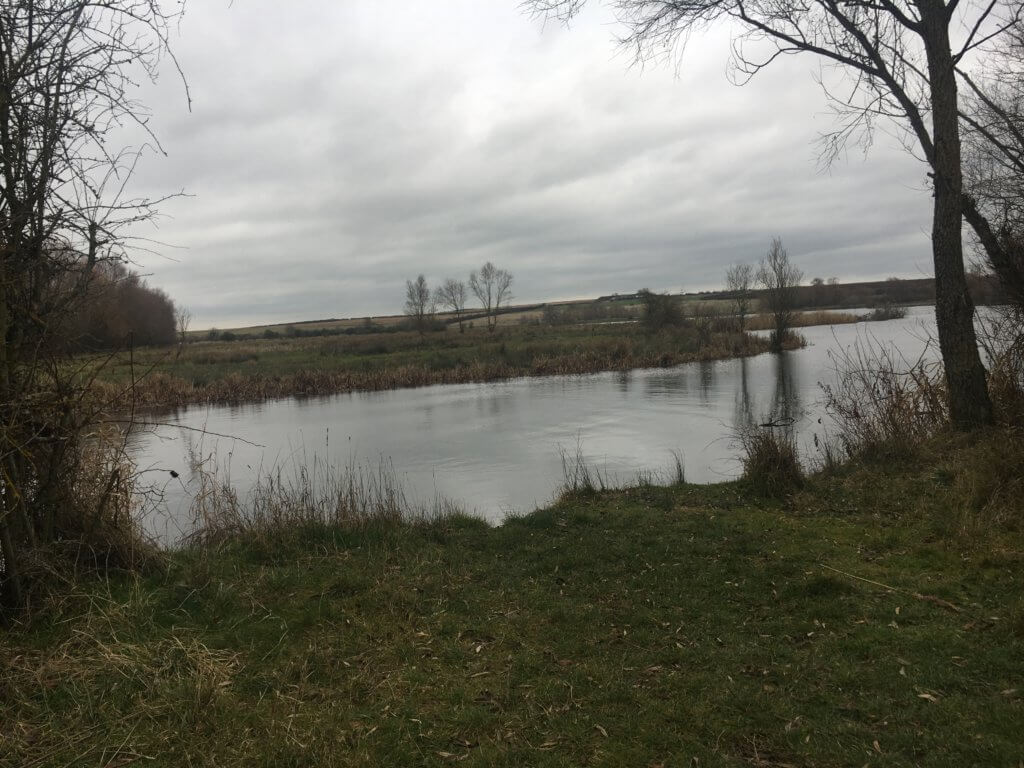
There has been a male Hen Harrier seen regularly at my local patch of Stanwick Lakes since well before Christmas. Quite a lot of people have seen it, quite a lot of us have not, and I’d really like to see it. I’d like to see it because it is always good to see a Hen Harrier, especially a male, and because it is so close to my home. I expect you can understand my motivation.
I must have made over a dozen vists over the last 3+ weeks when I might have seen this bird – but I have failed each time.
Yesterday, having spent some of the weekend working on some writing, I spent a lot of time at Stanwick Lakes and, although it was a dull and blowy day, I had a good time.
The few hours before dusk seem to be the best times to see this bird and so I was sitting on a bench overlooking its most regular haunt from about 2:30pm yesterday. I was joined by a couple of other local birders for quite a while but one by one they headed off and around 4pm I was thinking of doing the same as the light was getting dim and I was feeling the cold. But I decided to give it a while longer, just in case.
At 4:09pm my phone rang and it was Ruth Tingay (Birdwatch magazine’s Birders’ Choice for Conservation Hero of 2018). I looked up and it seemed pretty dim light so I took this as the signal to start walking home as I spoke to Ruth.
When I got home after a long chat and an even longer walk I looked at my phone and saw the the Hen Harrier had been seen at 4:13pm – 4 minutes after Ruth and I started talking. That Tingay woman robbed me of a Hen Harrier sighting!
When I told Ruth this she laughed and asked whether I was useless and couldn’t talk and look for Hen Harriers at the same time. She might be right – after all she is a conservation hero! But she owes me a Hen Harrier!
[registration_form]
The timing of the reported sighting suggests that the bird is roosting in the area you were watching. To up your chances, Mark, I would suggest you watch from approx. ten minutes before sunset ’til about twenty five after. In my experience hen harriers are often late to bed.
Many years ago when there was a big winter influx I, with others, counted 28 roosting at Titchwell. They were still coming in in the dark. As we walked back along the west bank a male crossed close in front of me. So, stay till it’s too dark to see!
Head north east from Corby to the Lincs coast. No male but two lovely ladies. As per comments, very late to bed. The local SEO’s seem a little put out though.
You have my sympathies Mark, on my local patch Henry and another pal are around as is at least one Ring-tail but they are elusive and not guaranteed. They can be seen at various times in the day as well as dusk and, despite putting the hours in there’s still an element of luck of being in the right place at the right time.
Very different from ten, twenty years ago I fear. Sadly we know the cause ….
But, as we both know when he shows it’s magic, just pure magic and a reminder of why we must keep on campaigning if the next generation is to enjoy similar experiences.
You should have stayed and either told Ruth you would ring her back or looked and talked! Ah well I might have done the same as you and missed it. I would go back at for three and stay until its to dark to see it. Why three, if feeding is good they sometimes come in early, if its poor he won’t be there until dark. Also in my experience the later he arrives the faster and lower the flight, so harder to see anyway. Best of luck!